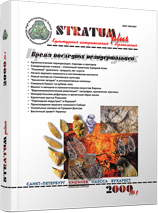Неандертальские рефугиумы и архаичный образ жизни
Neanderthal refugia and archaic lifeways
Author(s): Olga SofferSubject(s): History, Anthropology, Social Sciences, Archaeology, Cultural Anthropology / Ethnology
Published by: Издательский дом Stratum, Университет «Высшая антропологическая школа»
Keywords: Eurasia; Neanderthal lifeways; young Neanderthals;
Summary/Abstract: This chapter discusses the highly patterned distribution of the youngest archaic humans in Eurasia and argues that these «last stands» offer us new insights about Neanderthal lifeways and their demise. It focuses on the distribution of these young Neanderthals because such demographic factors as group size, spatial and temporal continuity of occupation, isolation, and extinction are seminal to the study of human evolution. Such an approach, one grounded in evolutionary biology, considers factors affecting both natural and sexual selection. I argue that the location of the youngest Neanderthals and the last of Middle Paleolithic lifeways shows a refuging phenomenon and suggest that the adaptations developed by these archaic hominids over many millennia gave them competitive advantages in very specific regions of Eurasia where they persisted until as late as some 27,000 years ago. This discussion neither assumes a 1:1 relationship between this taxon and a particular technology nor views the last Neanderthals as populations before extinction. Rather, acknowledging that we are dealing with hominids with behavioral flexibility which could allow for significant changes and thus for new lifeways, this chapter addresses an end to a particular way of life. Data on hand suggest that Neanderthals occupied permanently only those regions where the proximity of the plains, foothills, and mountain ranges created a number of ecotones with more complex, diverse, and productive biotic communities. Such areas featured the greatest vertical and biotic diversification. Thus, Eurasia was not fully packed with Middle Paleolithic groups from the Atlantic to the Pacific — rather, these archaic populations were localized discrete regional patches and continuously present only in regions with vertical differentiation and proximal resource diversification. It is these regions which served as their last refuges as well. The reasons for such distributions are not reducible to climate but reflect the specific organization of Middle Paleolithic lifeways.
Journal: Stratum plus. Археология и культурная антропология
- Issue Year: 2000
- Issue No: 1
- Page Range: 236-244
- Page Count: 9
- Language: Russian
- Content File-PDF

